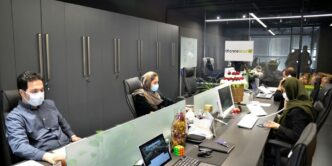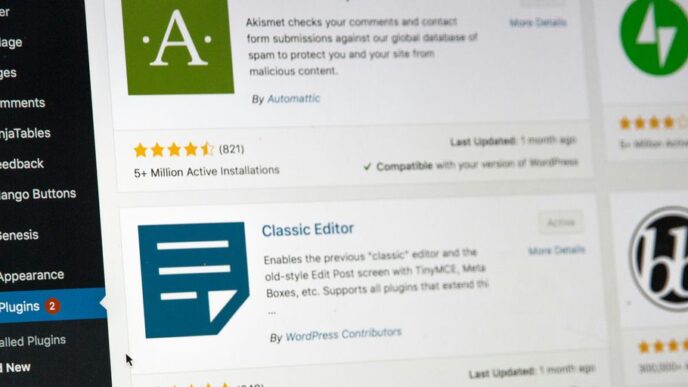Genes are manipulated and altered in ways that were once unimaginable in the world of recombinant DNA technology. But with all the scientific jargon and technical terms, it can be a daunting subject for those outside of the field. Fear not! In this post, we aim to break down the jargon and simplify recombinant DNA technology so that everyone, regardless of their background or expertise, can understand what it is and how it works.
Introduction to Recombinant DNA Technology
Recombinant DNA technology is a process by which DNA from two different sources can be combined to create a new, third DNA strand. This third DNA strand is known as recombinant DNA. The process of creating recombinant DNA is known as recombination.
Recombinant DNA technology has a wide range of applications, including medical and agricultural uses. In medicine, recombinant DNA techniques are used to create vaccines and other therapies. In agriculture, recombinant DNA techniques are used to create genetically modified crops.
The first step in creating recombinant DNA is to isolate the DNA from each of the two sources. This can be done using a variety of methods, including restriction enzymes and PCR (polymerase chain reaction). Once the DNA has been isolated, it can be combined using one of several methods, including ligase-mediated assembly or Gibson assembly.
Once the recombinant DNA has been created, it can be introduced into a host organism using a variety of methods, including transformation and transfection. The host organism will then express the desired traits encoded in the recombinant DNA.
What Is it Used For?
Recombinant DNA technology is used for a variety of purposes, including the production of pharmaceuticals, the development of genetically modified crops, and the study of disease.
One of the most important uses of recombinant DNA technology is the production of pharmaceuticals. Many lifesaving drugs are produced using recombinant DNA technology, such as insulin for diabetes, human growth hormone for dwarfism, and clotting factor VIII for hemophilia.
Recombinant DNA technology is also used in the development of genetically modified crops. These crops have been engineered to be resistant to herbicides or pests, or to produce more nutritious food. For example, golden rice has been engineered to contain higher levels of Vitamin A, which can help prevent blindness in developing countries.
Recombinant DNA technology is used in basic research to study genes and diseases. By manipulating genes in a controlled setting, researchers can learn more about how they work and how they may be involved in disease. This knowledge can then be used to develop new treatments and cures for diseases.
How Does It Work?
Recombinant DNA technology is a process used to create new DNA molecules by combining two or more existing DNA strands. This process can be used to insert new genetic information into a DNA molecule, or to remove unwanted genetic information.
The first step in recombinant DNA technology is to isolated the desired DNA fragments from the source material. These DNA fragments are then joined together using enzymes that act as molecular scissors, creating a new, hybrid DNA molecule.
Once the new DNA molecule has been created, it can be inserted into a host cell, where it will be replicated along with the host cell’s own DNA. The replicated hybrid DNA molecules can then be harvested and used for various purposes, such as creating genetically modified organisms (GMOs).
Recombinant DNA technology is an extremely powerful tool that has many potential applications. However, it also raises significant ethical concerns, as it can be used to create organisms with novel and potentially harmful traits.
Advantages & Disadvantages of Recombinant DNA Technology
There are many advantages and disadvantages to recombinant DNA technology. One advantage is that it can be used to create new genetic combinations that would not occur naturally. This can be useful for creating new medicines and treatments for diseases. It can also be used to create crops that are resistant to pests or drought. Another advantage is that it is relatively fast and cheap to produce genetically modified organisms using this method.
However, there are also some disadvantages to this technology. One is that there is always the potential for unintended consequences when manipulating genes. For example, a gene that is inserted into an organism may have unexpected effects on other genes or on the overall health of the organism. There is also concern that GMOs may be harmful to the environment or human health if they are released into the wild without proper testing first.
What Are The Applications Of Recombinant DNA Technology?
Recombinant DNA technology is used in a variety of different fields and applications. One common application is in the field of medicine, where it is used to create new and innovative treatments for diseases. It can also be used to create genetically modified organisms (GMOs) that are resistant to pests or have enhanced nutritional value. Additionally, this technology is often used in agricultural research to develop new and improved crop varieties.
Common Techniques in Recombinant DNA Technology
One of the most important and commonly used techniques in recombinant DNA technology is restriction fragment length polymorphism (RFLP). This technique is used to identify DNA differences between individuals or species. RFLP works by cutting the DNA at specific locations with enzymes called restriction enzymes. The fragments are then separated by size using gel electrophoresis. By comparing the patterns produced, it is possible to determine which DNA sequences are different.
Another common technique is polymerase chain reaction (PCR). PCR is a way to make many copies of a specific region of DNA. This is done by heating the DNA so that it separates into single strands. Then, primers (short pieces of complementary DNA) are added that attach to the desired region. The temperature is then lowered so that DNA polymerase can bind to the primer and create a new strand of DNA. This process is repeated many times, resulting in millions of copies of the desired region of DNA.
PCR can be used for many different applications, such as amplifying small amounts of DNA from forensic samples, detecting genetic disorders, and identifying bacteria and viruses.
Recombinant DNA technology has also been used to create genetically modified organisms (GMOs). GMOs are organisms whose genetic material has been altered using techniques such as gene splicing or transgenesis. These techniques allow for the introduction of new genes into an organism’s genome. GMOs are used in research, agriculture, and medicine. For example,
Future of Recombinant DNA Technology
The future of recombinant DNA technology is shrouded in potential. This powerful tool has already led to the development of groundbreaking treatments for conditions like cancer and HIV/AIDS, and there is no telling what else it may be capable of in the years to come. With continued research and refinement, recombinant DNA technology may one day allow us to engineer custom-made organisms with specific desired traits, or even create entirely new life forms. The possibilities are endless – and exciting.
Conclusion
Recombinant DNA technology is a revolutionary tool that has greatly advanced the field of biotechnology. We hope this article has given you an overview of what recombinant DNA technology is and how it works, demystifying some of its complex technical jargon along the way. With a better understanding of recombinant DNA technology, we can all gain insight into its many potential applications and possibilities in the future.













